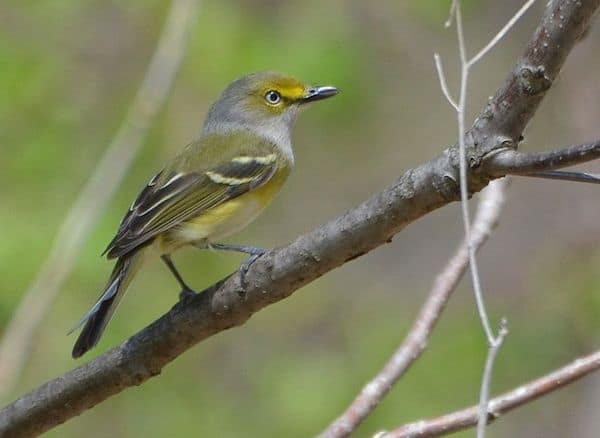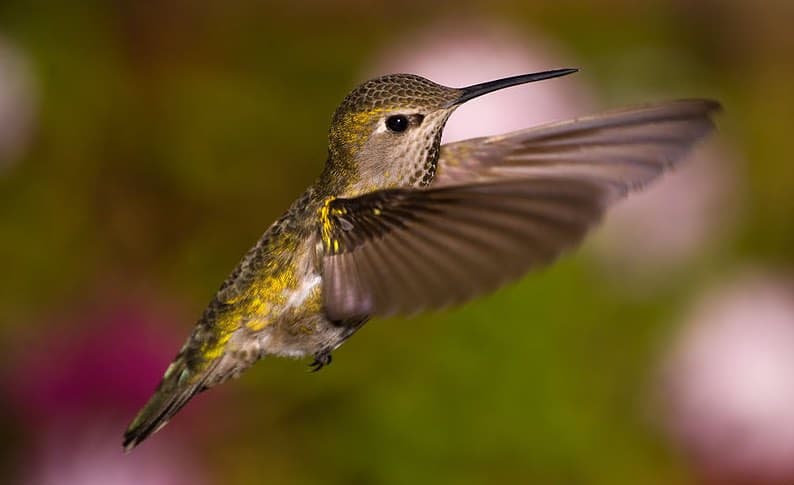In a field guide page, the white-eyed vireo resembles other vireo species. In real life, however, this bird’s voice, habitat, and perky habits set it apart from the rest of the pack. The white-eyed vireo may at first appear nondescript, but this bird has field marks that will quickly set you on the path to its identification: the yellow that curls around the eye like spectacles, the white eye, and the yellow sides and flanks.
Its head is mostly gray with whitish coloring on the throat, and you’ll see two white wing bars on its darkish wings. The white eye is a useful field mark in adults, but immatures have dark eyes.
Listen for
You can easily coax a white-eyed vireo out of dense cover by making spishing noises or by waiting patiently to spot the bird as it sings its distinctive Per-chick-a-WOW-chick! song again and again.
Find it
While red-eyed, yellow-throated, and warbling vireos winter in the tropics, many white-eyed vireos tough it out from southern Georgia across the edge of the Gulf of Mexico. In early spring, white-eyed vireos are usually the first of the vireos to return to their nesting grounds.
The brushy edges of forests and waterways, along with old fields turning to young forest, are the domain of this common and very perky eastern songster. You will also find it in the brambly underbrush within open forests. In the Deep South, white-eyed vireos are present all year-round. Over much of the more northerly breeding range, birds retreat to the South and into the tropics for the winter.
Feed it
On their breeding grounds, white-eyed vireos eat insects, including butterflies, caterpillars, beetles, and many others. While migrating and wintering, they also eat berries.
Nesting Behavior
True to their habits and habitat, white-eyed vireos usually nest in shrubs or young trees, often not very high off the ground. Both male and female build the hanging cup nest, which is made of stems, bark, twigs, and other plant matter.
The female usually lays three or four eggs. Both parents incubate the eggs for about two weeks, and young usually leave the nest before their twelfth day after hatching.
WOW!
Other descriptions of the White-eyed Vireo’s song are Gingerbeer-quick!, Take me to the railroad quick! and Chick of the village!




